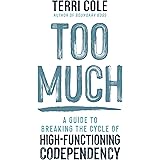Imagine a clinical landscape where a pervasive behavioral pattern, clearly causing significant distress and functional impairment, lacks a universally agreed-upon diagnostic framework. This very challenge confronts mental health professionals grappling with what we term Internet Addiction (IA). As Dr. Cecilia Rovetta adeptly highlights in the accompanying video, this relatively nascent phenomenon presents unique complexities, yet also offers profound opportunities to adapt and innovate within established therapeutic paradigms.
The Evolving Landscape of Digital Dependency: Diagnostic Ambiguity and Clinical Parallels
The concept of Internet Addiction, or Internet Use Disorder as some prefer, remains a subject of intense empirical investigation. Dr. Rovetta accurately notes the ongoing lack of a consensual definition, leading to diagnostic uncertainties that can complicate initial assessments. For the seasoned clinician, this ambiguity necessitates a nuanced approach, often relying on clinical judgment and a careful evaluation of the patient’s individual presentation.
1. Despite these definitional challenges, the symptomatic profile of IA often mirrors more familiar addictive behaviors, such as compulsive gambling and substance dependence. This resemblance is not merely superficial; it extends to underlying neurobiological mechanisms and psychological vulnerabilities. Professionals can leverage this conceptual bridge, applying insights gleaned from decades of addiction research to inform initial hypotheses and treatment planning for digital overuse.
2. Acknowledging these significant similarities allows us to confidently draw upon validated intervention models already established in both research and clinical practice. Specifically, the cognitive-behavioral approach emerges as a cornerstone, providing a structured, problem-oriented framework. This modality is particularly attractive for its evidence-based foundation and its focus on developing concrete strategies for behavioral modification and cognitive restructuring, making it an invaluable tool for **treating Internet Addiction**.
Unpacking the Symptomatology of Internet Addiction
When working with individuals struggling with Internet Addiction, several core discomforts consistently emerge, impacting their offline lives profoundly. These often manifest as an intricate web of cognitive, emotional, and behavioral dysregulations. Recognizing these patterns is paramount for accurate diagnosis and the development of targeted interventions within a CBT framework.
3. A hallmark symptom is the excessive preoccupation and persistent rumination surrounding internet use, even when not actively online. Imagine a patient who, despite being at a family dinner, is mentally rehearsing their next online gaming session or checking social media notifications on their phone, completely disengaged from their physical surroundings. This pervasive mental immersion consumes significant cognitive resources, diverting attention from real-world responsibilities.
4. Another critical indicator is the loss of control over internet use, despite experiencing clear negative consequences. This manifests as an inability to reduce or cease online activities even when they jeopardize relationships, academic performance, or employment. Clinicians will often observe a pattern of increasing tolerance, where the individual requires more time online to achieve the same level of satisfaction, alongside distinct symptoms of social withdrawal as real-world interactions are supplanted by digital ones. Addressing these core issues forms the bedrock of an effective strategy for **treating Internet Addiction**.
The Cognitive-Behavioral Modality in Treating Internet Addiction
The cognitive-behavioral approach offers a robust, empirically supported methodology for addressing the multifaceted nature of Internet Addiction. It operates on the premise that our perceptions directly influence our emotional and behavioral responses to specific situations. For individuals with IA, this often means unraveling a complex interplay between their thoughts about online engagement, their emotional state, and their actual behaviors.
Core Principles of CBT for Digital Overuse
5. In a CBT-oriented treatment, patients learn to observe the intricate nexus between their thought processes, overt behaviors, and emotional experiences. This introspection is not merely academic; it empowers them to identify dysfunctional cognitive patterns that perpetuate their online compulsion. For instance, a patient might learn that a belief like “only online interactions truly understand me” directly fuels their social withdrawal and excessive screen time.
6. Therapy also actively creates conditions to sustain behavioral changes, providing a supportive environment for skill acquisition and practice. This involves strategically challenging dysfunctional beliefs that underpin the addiction and promoting their cognitive restructuring. Imagine guiding a patient to systematically dispute the notion that their worth is solely derived from online validation, gradually shifting their focus towards real-world achievements and relationships.
Strategizing for Behavioral Change and Cognitive Restructuring
7. Furthermore, the introduction of harm reduction strategies is an integral component, particularly in the initial phases of **treating Internet Addiction**. This might involve setting specific time limits, identifying “safe” online activities, or establishing “internet-free zones” within the home. These strategies are designed to incrementally reduce problematic behaviors while building a sense of agency and self-efficacy.
8. Establishing sufficient conditions of stability and trust is paramount, ensuring that the patient feels secure enough to access and utilize the tools developed within therapy. This therapeutic alliance enables them to tackle ingrained habits and uncomfortable truths. The process of restructuring dysfunctional cognitions requires consistent effort, and a supportive environment facilitates this challenging, yet rewarding, journey.
Navigating Relapse Prevention and Treatment Efficacy
An effective therapeutic approach for Internet Addiction extends beyond the cessation of problematic behaviors; it critically incorporates robust strategies for relapse prevention. The digital world is ubiquitous, making complete abstinence often impractical and unsustainable for many. Therefore, developing resilience and alternative coping mechanisms is essential for long-term recovery.
Proactive Relapse Prevention in Internet Addiction Treatment
9. A crucial aspect of this proactive approach involves identifying potential triggers – both internal (e.g., feelings of loneliness, stress, boredom) and external (e.g., specific environments, social cues, notifications). Imagine a patient identifying that late evenings, feeling anxious about work, consistently lead them back to excessive online gaming. Once identified, the therapist and patient can collaboratively develop alternative behaviors and recovery strategies, such as engaging in a non-digital hobby or reaching out to a support network, to manage these high-risk situations.
10. The development of a comprehensive recovery plan, often including contingency management and social support integration, fortifies the patient against future relapses. This doesn’t simply mean avoiding the internet, but rather cultivating a rich, fulfilling offline life that reduces the perceived need for digital escapism. This preventative stance is critical for sustainable progress in **treating Internet Addiction**.
Optimizing Treatment Settings and Future Research Directions
11. The efficacy of various treatment settings for Internet Addiction also warrants continued exploration. Distinguishing between individual and group settings, for instance, can help tailor interventions to patient needs. While individual therapy offers personalized attention to complex issues and comorbid conditions, group therapy can provide invaluable peer support, reduce feelings of isolation, and offer diverse perspectives on coping strategies.
12. Ultimately, the field of Internet Addiction remains dynamic, necessitating ongoing, rigorous empirical investigations. These relatively new disorders demand continuous refinement in both research and clinical application to ensure that we offer the most effective, evidence-based treatments available to our patients. The journey of **treating Internet Addiction** is an evolving one, requiring persistent dedication to scientific inquiry and clinical innovation.











